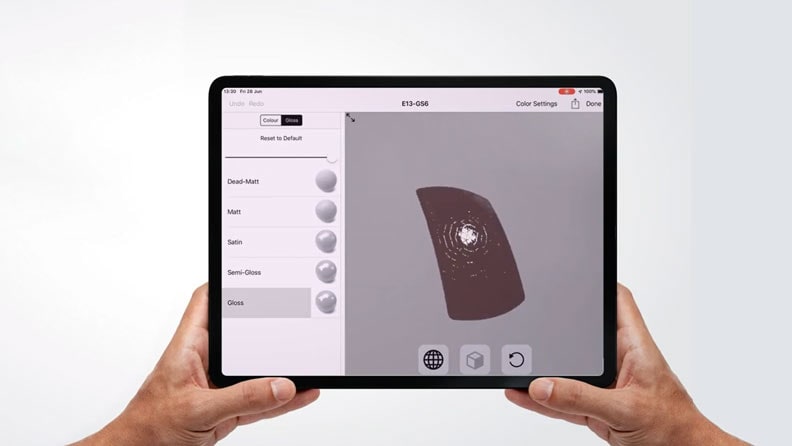Whether it needs to be mirror-like, smooth or way beyond, our expert chemists know exactly how to make paints with precisely the kind of glossy appearance our customers are looking for.
Now that might all sound fairly straightforward. But in order to fully understood the technical challenges that are involved, you need to delve beneath the surface. Because gloss is really just a more familiar word for some rather intricate physics.
Let’s start with the refractive index. It’s a bit complex, but one of the things it does is describe how fast light travels through a particular material and how much light reflects off its surface. So, for example, there’s a big difference between light hitting a diamond and a flat body of water (which is much less reflective, but just as smooth). Yes, both surfaces reflect light, but in very different amounts, and our paints vary somewhere between the two.
“When developing our 3D color tools, our scientists also have to consider the direction in which light is scattered once it reflects off our paint, “ explains AkzoNobel Color Researcher, Ivo van der Lans.
“Take the light from a lamp, for example. If viewed in reverse (from the paint surface back to the lamp), your eye will see a sharp, mirrored image of a single lamp when it’s reflected in a smooth, glossy paint. However, when viewed via a medium gloss paint, your eye will see a blurred image of the same lamp. And if it’s a matt paint, you may well see a confusion of multiple lamps reflected towards your eye.”
This doesn’t just apply to lamps, but any environment that’s reflected off a painted surface. So we take great care when designing 3D environments to ensure that they assist – rather than prevent – our customers appreciating the full extent of the paint’s glossy appearance.

“The cutting-edge technology we use offers a super-realistic color and gloss experience to help make the paint selection process as smooth as possible for both architects and home decorators,” explains Pim Koeckhoven, AkzoNobel’s Director of Color Technology. “It represents a true step forward in how we support our customers.”
As if the getting the gloss right wasn’t complex enough already, we also have to consider the various terms that our customers are very familiar with, such as high gloss, egg-gloss, matt and dead matt. “Our businesses use these terms in their communication to represent specific levels of glossiness,” continues Ivo. “So when developing our 3D color tools, we model these gloss levels so they’re properly visualized and we make certain that ‘what-you-see-is-what-you-get.’”
And here’s something else to consider. When you take a static photograph of paint, it’s easy to mistake something like “mattness” for lack of sharpness. But in reality – and in our dynamic 3D visualizations – these objects move and the paints come to life. You can actually see the depth beyond the painted surface. And this doesn’t just apply to solid paints. It also applies to metallics and pearlescent colors, which have layer upon layer of gloss.
Going back to the physics, we measure this “index of refraction” for our paints and characterize the distribution of directions in which the light scatters off them. We then combine that with all the color measurements from our databases. Finally, before revealing the finished gloss, we do a visual comparison – just to make sure!

Create your perfect finish
Design professionals will love our iColorDesign app. Get on-the-go access to the latest color solutions from AkzoNobel, in your own digital color lab.




